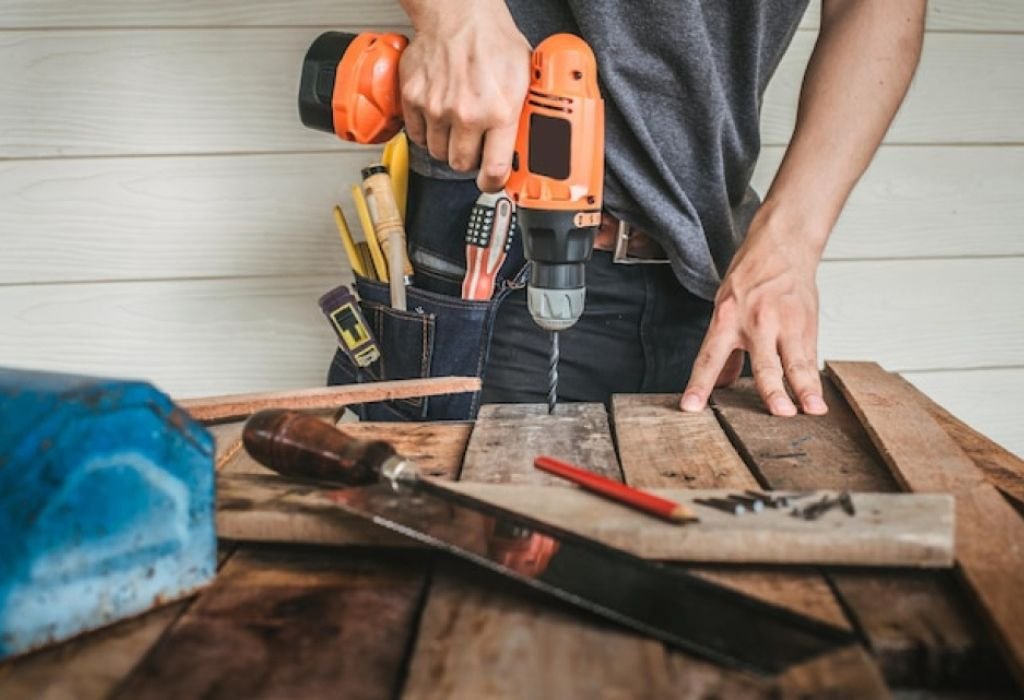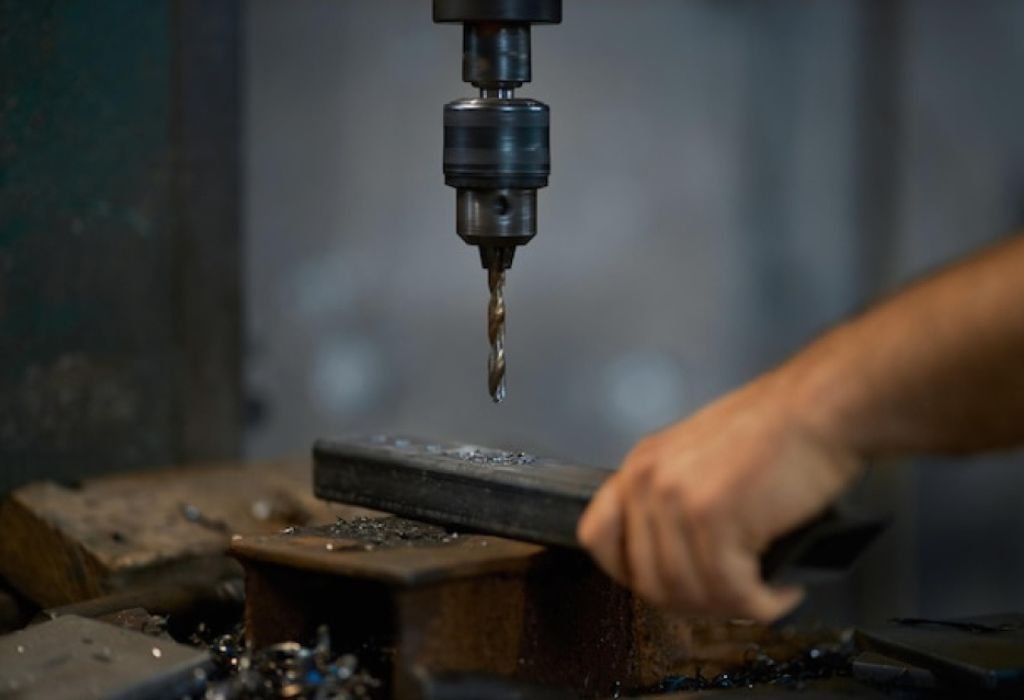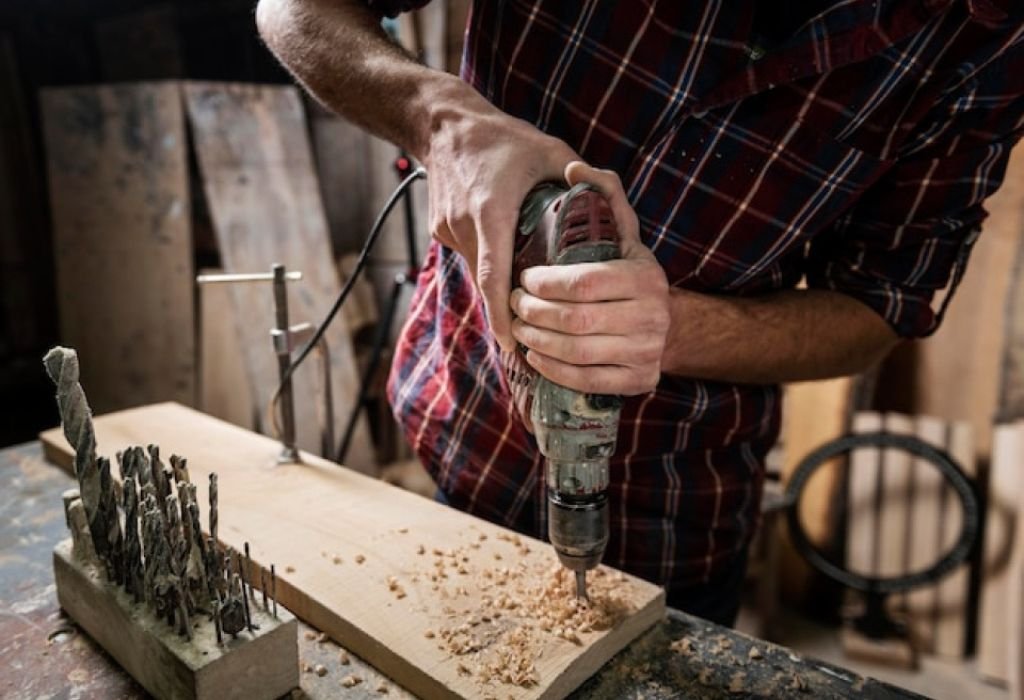A DIYer picks up a cordless drill to mount a metal bracket and wonders if the tool can handle the job. The question quickly becomes can a cordless drill go through metal without breaking bits or overheating.
Many people assume that only heavy-duty corded drills or drill presses can manage metal. In reality, a cordless drill can be powerful enough if the right bits, speed, and technique are used.
Metal is harder than wood or plastic, which makes drilling more challenging. Without preparation, the drill bit can slip, dull, or even snap.
Choosing the wrong drill bit is one of the biggest mistakes beginners make. Wood bits fail instantly on steel, while high-speed steel or cobalt bits cut cleanly through.
The cordless drill market surpassed $15 billion in 2023, showing how essential these tools have become for both homeowners and professionals (Grand View Research). Their versatility is a key reason why they dominate toolboxes everywhere.
Meanwhile, metalworking is a $300+ billion industry worldwide, proving just how important reliable drilling equipment is for construction and repairs (Statista). These numbers highlight the strong demand for tools that can handle both wood and metal with efficiency.
Proper speed settings are another factor that makes or breaks the process. Cordless drills with variable speed controls allow slow drilling, which is crucial for cutting through metal.
With the right preparation, a cordless drill can handle sheet metal, pipes, and even tougher materials. This guide will explain the bits, settings, safety steps, and techniques needed to drill through metal effectively.
By the end, you will know exactly how to use your cordless drill for metal projects without damaging tools or materials.
Can a Cordless Drill Go Through Metal?

Yes, a cordless drill can go through metal when used properly. The key is matching the drill with the right drill bit and speed.
Low-voltage drills may only handle thin sheet metal. Higher voltage models with more torque can manage thicker steel with the correct bit.
Can a cordless drill go through metal?
Yes, with the right drill bit and settings.
Does drill voltage matter?
Yes, higher voltage handles thicker metals better.
Will cheap bits work on steel?
No, you need quality HSS or cobalt bits.
Can a 12V drill handle metal?
Yes, but only thin sheet metal.
Choosing the Right Drill Bits for Metal
The drill bit makes the biggest difference when working with metal. High-speed steel (HSS) bits are suitable for general metal drilling.
Cobalt bits are stronger and ideal for stainless steel. Titanium-coated bits improve durability and reduce friction.
Step bits are useful for sheet metal, making clean holes without tearing edges. Using the wrong bit, such as one for wood, will quickly damage both the bit and material.
What drill bits work best on metal?
HSS and cobalt bits are the top choices.
Are titanium bits good for metal?
Yes, they reduce wear and extend bit life.
Do step bits work on metal?
Yes, for thin sheets and precise holes.
Can wood bits cut metal?
No, they dull or snap quickly.
Drill Power and Speed Settings
The drill’s voltage and torque determine its ability to cut metal. Drilling metal requires low speed and steady torque to avoid overheating.
Variable speed drills are ideal since they allow adjustments depending on the thickness of the material. Pushing too hard or using high speed can destroy the bit.
Cordless drills with brushless motors provide better control and efficiency for metalwork. Maintaining slow, steady pressure is key to success.
What speed is best for drilling metal?
Low speed prevents overheating.
Does torque matter for metal drilling?
Yes, higher torque makes drilling easier.
Can fast drilling damage bits?
Yes, heat dulls bits quickly.
Is variable speed necessary?
Yes, it ensures precise control.
Preparing Metal for Drilling

Preparation is essential for accuracy and safety. Mark the drilling spot with a center punch to prevent slipping.
Clamp the metal firmly to avoid movement while drilling. Using cutting oil or lubricant reduces heat and extends bit life.
For larger holes, start with a small pilot hole before using the final drill size. This method reduces strain on both the bit and the drill.
Why use a center punch?
It keeps the bit from slipping.
Do I need to clamp the metal?
Yes, to ensure safety and precision.
Is cutting oil important?
Yes, it cools the bit and reduces wear.
Should I drill pilot holes?
Yes, they make drilling smoother.
Safety Precautions When Drilling Metal
Drilling metal produces sharp shards and sparks. Always wear safety goggles and gloves to protect yourself.
Avoid loose clothing that can get caught in the drill. Keep flammable materials away from the work area.
Allow both the bit and the metal to cool between passes. Overheating can damage the bit and cause injuries.
Do I need safety gear?
Yes, goggles and gloves are essential.
Can drilling cause sparks?
Yes, especially with steel.
Is heat a danger?
Yes, bits and metal edges become very hot.
Should I cool the bit?
Yes, pause often and add lubricant.
Common Mistakes to Avoid
Rushing the process is the most common mistake when drilling metal. High speed and force can cause bits to dull or snap.
Using wood bits or cheap sets results in poor performance and frustration. Skipping cutting oil leads to excess heat and damaged tools.
Failing to secure the metal can cause slipping, uneven holes, or injury. Always prepare properly before drilling.
What happens if I use wood bits on metal?
They break or dull instantly.
Is pushing harder better?
No, steady pressure works best.
Can I drill without lubricant?
Yes, but it damages bits quickly.
Why avoid high speed?
It overheats the bit and reduces precision.
When to Use a Cordless Drill vs Other Tools

Cordless drills are versatile and convenient for most light and medium metalwork. They are ideal for sheet metal, pipes, and thin steel.
For very thick steel, a drill press or corded drill may be more efficient. These tools provide more consistent torque and durability for heavy-duty tasks.
Impact drivers are not ideal for drilling holes but are excellent for driving fasteners into metal. Choosing the right tool ensures both safety and effectiveness.
Is a cordless drill enough for thick steel?
Not always, a drill press is better.
Can I use an impact driver on metal?
Yes, but only for fasteners, not holes.
Is portability an advantage?
Yes, cordless drills can be used anywhere.
Do pros use cordless drills on metal?
Yes, for lighter and portable jobs.
Market Trends in Cordless Drills and Metal Bits
The cordless drill market is evolving quickly. Brushless motors are becoming the standard for better efficiency and performance.
Cobalt and carbide bits are increasingly popular for tough metals. Step bits are gaining popularity for DIY metal projects.
Manufacturers now offer drill kits that include metal, wood, and masonry bits. Auto-stop safety features are also becoming common in professional models.
Are brushless drills better for metal?
Yes, they provide more efficiency and torque.
Are cobalt bits trending?
Yes, they handle stainless steel effectively.
Do modern drills have safety features?
Yes, features like auto-stop protect users.
Are combo kits popular?
Yes, they include multi-material bits.
Conclusion
The answer to can a cordless drill go through metal is yes, but only with the right drill bit, speed, and preparation. Cutting through metal requires patience and proper safety measures.
Cordless drills excel at handling thin to medium metals with precision. For thicker steel, heavier equipment may be required.
By selecting quality drill bits, adjusting speed settings, and following safe practices, you can confidently use a cordless drill for metalwork. The right approach transforms a cordless drill into a versatile tool for DIY and professional projects alike.

I’m John F. Nicholas, the founder, lead writer, and drill enthusiast behind 101drill.com. With years of hands-on experience in power tools and DIY projects, I created this platform to share practical knowledge, expert tips, and real-world insights to help others master the art of drilling.
